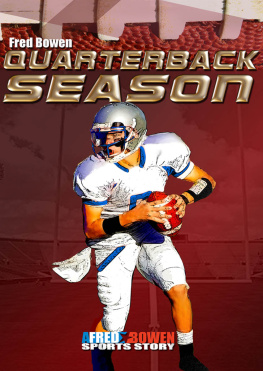Futterman - Players : the story of sports and money--and the visionaries who fought to create a revolution
Here you can read online Futterman - Players : the story of sports and money--and the visionaries who fought to create a revolution full text of the book (entire story) in english for free. Download pdf and epub, get meaning, cover and reviews about this ebook. year: 2016, publisher: Simon & Schuster, genre: Detective and thriller. Description of the work, (preface) as well as reviews are available. Best literature library LitArk.com created for fans of good reading and offers a wide selection of genres:
Romance novel
Science fiction
Adventure
Detective
Science
History
Home and family
Prose
Art
Politics
Computer
Non-fiction
Religion
Business
Children
Humor
Choose a favorite category and find really read worthwhile books. Enjoy immersion in the world of imagination, feel the emotions of the characters or learn something new for yourself, make an fascinating discovery.

- Book:Players : the story of sports and money--and the visionaries who fought to create a revolution
- Author:
- Publisher:Simon & Schuster
- Genre:
- Year:2016
- Rating:5 / 5
- Favourites:Add to favourites
- Your mark:
Players : the story of sports and money--and the visionaries who fought to create a revolution: summary, description and annotation
We offer to read an annotation, description, summary or preface (depends on what the author of the book "Players : the story of sports and money--and the visionaries who fought to create a revolution" wrote himself). If you haven't found the necessary information about the book — write in the comments, we will try to find it.
The business of sports has been completely transformed over the course of my lifetime, and Players is a riveting behind-the-scenes look at the beginnings of that revolution. I couldnt put it down. Billy Beane
The astonishing untold story of the people who transformed sports, in the span of a single generation, from a job that required top athletes to work in the off-season to make ends meet into a massive global business.
In the cash-soaked world of contemporary sports, where every season brings news of higher salaries, endorsement deals, and television contracts, it is mind-boggling to remember that as recently as the 1970s elite athletes earned so little money that many were forced to work second jobs in the off-season. Roger Staubach, for example, made only $25,000 in his first season as the starting quarterback for the Dallas Cowboys and wound up selling commercial real estate during the summer. Today, when Fortune reports that every athlete on its Top 50 list makes more than twenty million dollar per year, its clear that a complete reversal of power has occurred right before our eyes.
Players is the first book to tell the astonishing narrative behind the creation of the modern sports businessa true revolution that moved athletes from the bottom of the financial pyramid to the top. It started in 1960, when a young Cleveland lawyer named Mark McCormack convinced a young golfer named Arnold Palmer to sign with him. McCormack simply believed that the best athletes had more commercial value than they realizedand he was right. Before long, he raised Palmers annual off-the-course income from $5,000 to $500,000 and forever changed the landscape of the sports world.
In Players, veteran Wall Street Journal sports reporter Matthew Futterman introduces a wide-ranging cast of characters to tell the story of the athletes, agents, TV executives, and league officials who together created the dominating and multifaceted sports industry we know today. Beginning with Palmer and McCormacks historic partnership, Players features details of the landmark moments of sports that have never been revealed before, including how legendary Wide World of Sports producer Roone Arledge realized that the way to win viewers was to blend sports and human drama; the 1973 Wimbledon boycott, when eighty-one of the top tennis players in the world protested the suspension of Nikola Pilic; and baseball pitcher Catfish Hunters battle to become MLBs first free agent.
Players is a gripping, fly-on-the-wall account of the creation and rise of the modern sports world and the people who fought to make it happen. From the professionalization of the Olympics to the outsize influence of companies like IMG, Nike, and ESPN, this fascinating book details the wild evolution of sports into the extravaganza we experience today, and the inevitable trade-offs those changes have wrought
Futterman: author's other books
Who wrote Players : the story of sports and money--and the visionaries who fought to create a revolution? Find out the surname, the name of the author of the book and a list of all author's works by series.










